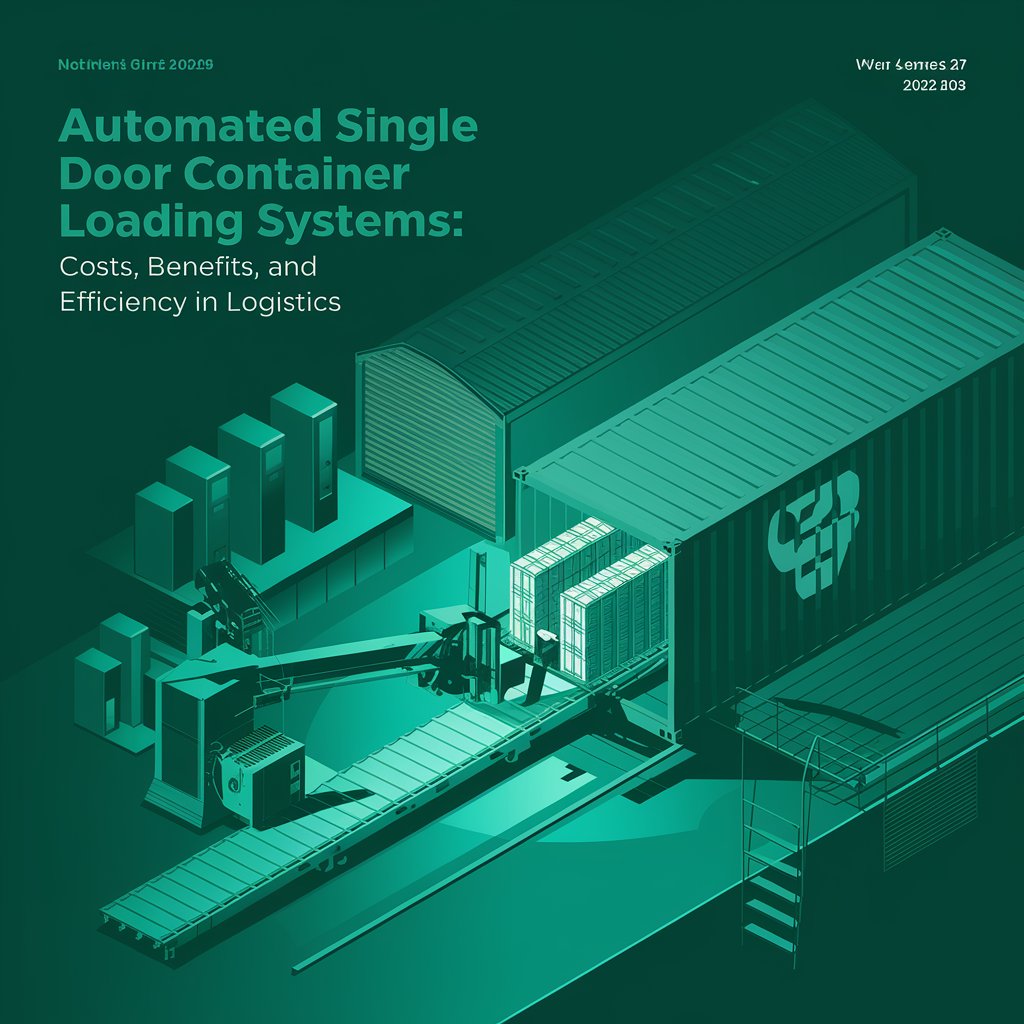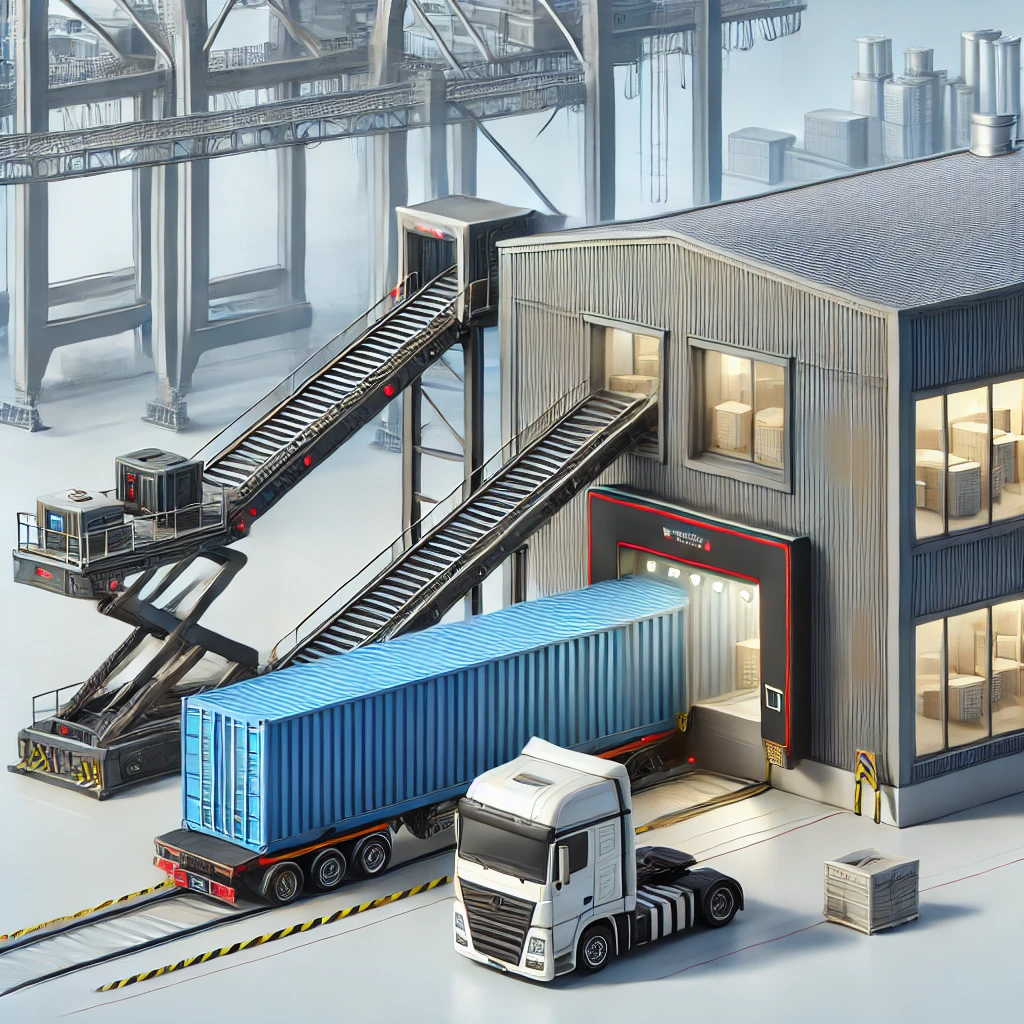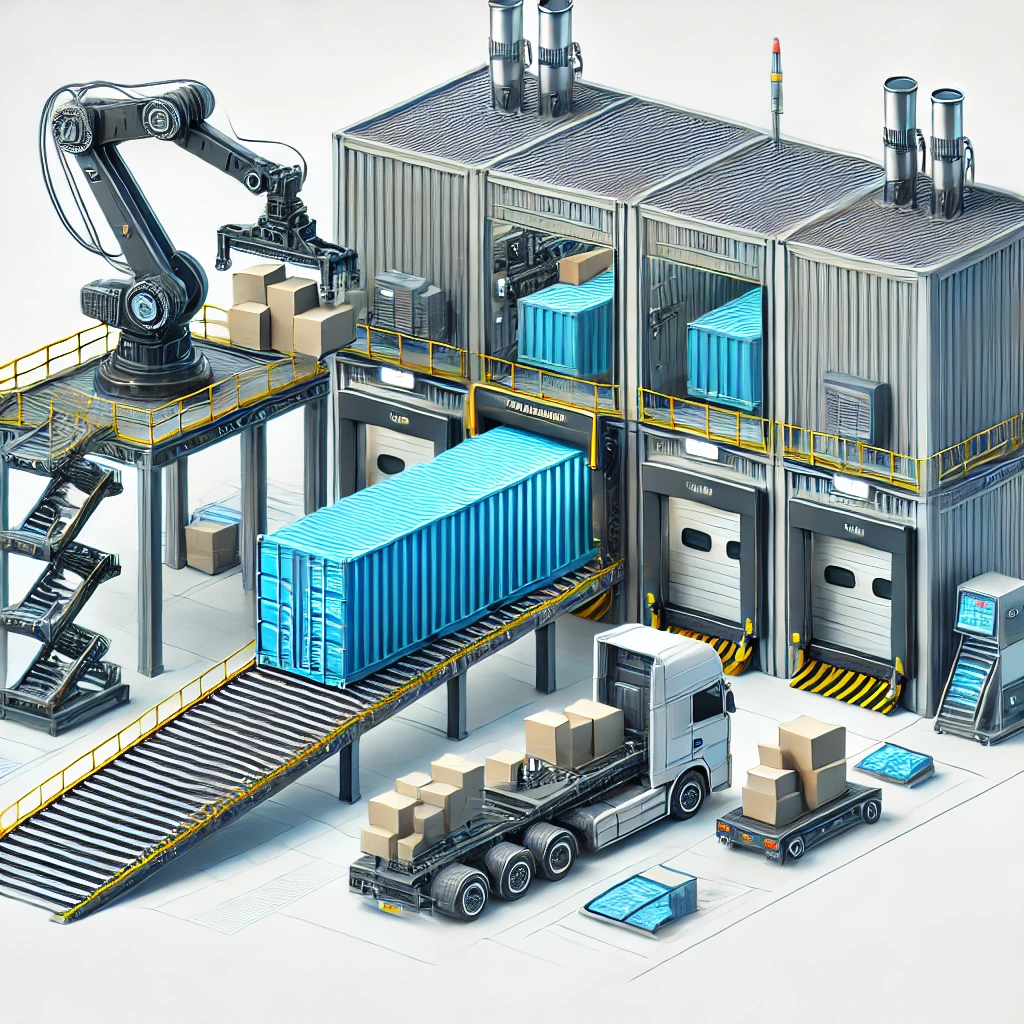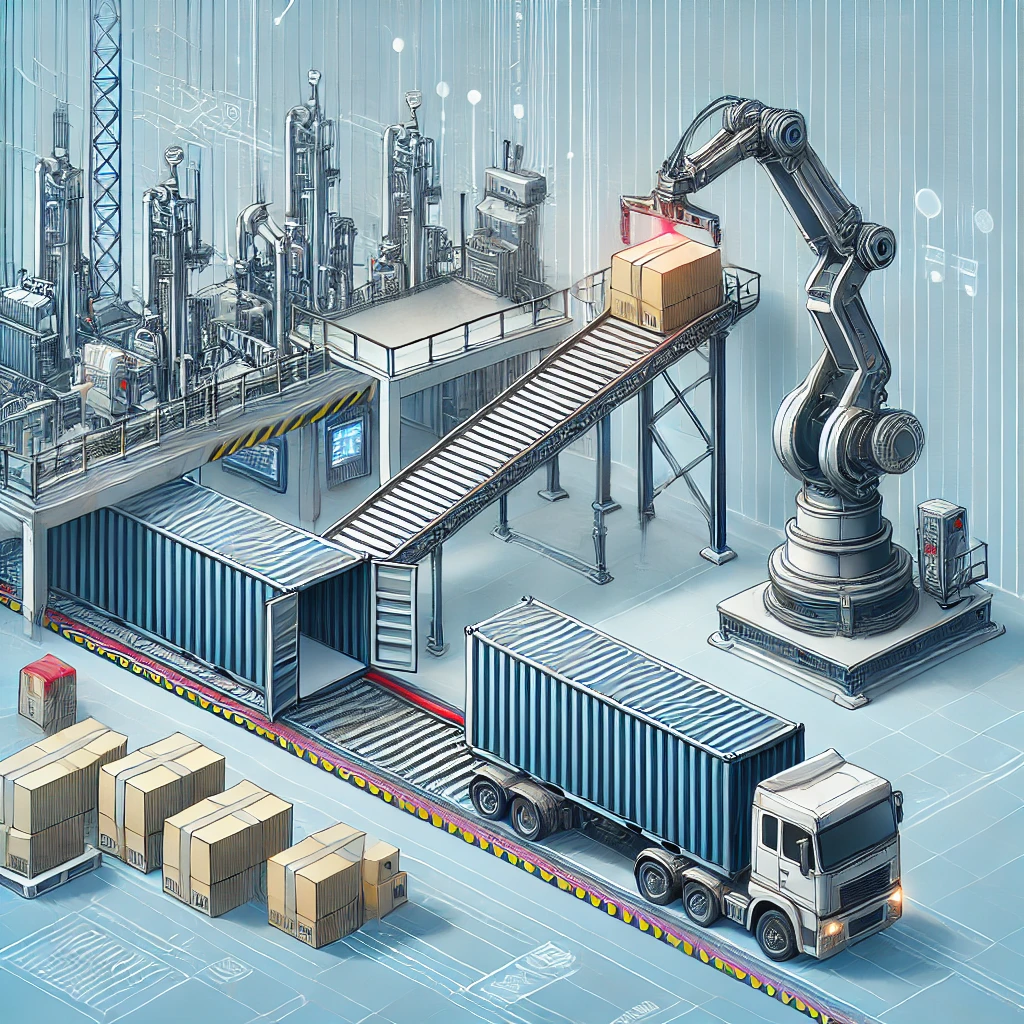Automated Single Door Container Loading System Cost: A Comprehensive Guide

Understanding Automated Single Door Container Loading Systems
Before we dive into the costs, it’s essential to understand what an automated single door container loading system is and how it works.
What is an Automated Single Door Container Loading System?
An automated single door container loading system is a sophisticated piece of equipment designed to streamline the process of loading goods into shipping containers or trucks. These systems are particularly useful for businesses that regularly ship large volumes of palletized or slip-sheeted goods.
The “single door” aspect refers to the system’s ability to load containers through one door, typically the rear door of a truck or shipping container. This is in contrast to systems that might require side-loading or multiple access points.
How Does It Work?
The basic principle of an automated single door container loading system involves:
- Preparing goods on pallets or slip sheets
- Positioning the container or truck at the loading dock
- Using a conveyor system to move goods to the loading area
- Employing an automated mechanism (often a push-pull system or skate loader) to efficiently move goods into the container
- Stacking and organizing goods within the container without manual intervention
This automation significantly reduces loading time, minimizes labor requirements, and optimizes space utilization within the container.
The Cost of Automated Single Door Container Loading Systems
Now, let’s address the main question: What is the cost of an automated single door container loading system?
Price Range
The cost of these systems can vary widely based on several factors. Generally, you can expect to invest anywhere from $50,000 to $500,000 or more for a comprehensive automated loading system.
- Basic systems: $50,000 – $150,000
- Mid-range systems: $150,000 – $300,000
- High-end, fully customized systems: $300,000 – $500,000+
Factors Influencing Cost
Several factors contribute to the wide price range:
- System Complexity: More advanced systems with higher levels of automation and additional features will naturally cost more.
- Loading Capacity: Systems designed to handle higher volumes or heavier loads will be pricier.
- Customization: If you need a system tailored to your specific operational requirements, expect to pay more.
- Integration with Existing Systems: The cost may increase if extensive modifications are needed to integrate the new system with your current warehouse management system or other logistics software.
- Brand and Manufacturer: Like any product, different brands and manufacturers offer varying levels of quality, support, and pricing.
- Installation and Training: These costs are often not included in the base price and can add significantly to the overall investment.
- Maintenance and Support Contracts: Long-term maintenance agreements can add to the total cost of ownership but may provide peace of mind and more predictable expenses over time.

Comparing Costs: Automated vs. Manual Loading
To truly understand the value of an automated single door container loading system, it’s important to compare its costs with traditional manual loading methods.
Manual Loading Costs
Manual loading involves significant labor costs:
- Labor costs for multiple workers
- Potential overtime during peak periods
- Training costs for proper loading techniques
- Higher risk of workplace injuries and associated costs
- Slower loading times, potentially leading to delayed shipments and associated penalties
Long-term Cost Benefits of Automation
While the upfront cost of an automated system is higher, there are several long-term benefits:
- Reduced Labor Costs: Automated systems can often be operated by a single worker, significantly reducing labor requirements.
- Increased Efficiency: Faster loading times mean more shipments can be processed in less time.
- Improved Space Utilization: Automated systems are designed to optimize container space, potentially reducing the number of shipments needed.
- Reduced Product Damage: Automated systems handle goods more consistently, reducing the risk of damage during loading.
- Enhanced Worker Safety: By reducing manual handling, these systems minimize the risk of workplace injuries.
- Consistent Performance: Automated systems maintain consistent performance levels, regardless of shift changes or worker fatigue.
.
Types of Automated Loading Systems and Their Costs
There are several types of automated loading systems, each with its own cost implications:
1. Skate Loader Systems
Skate loader truck loading systems are popular for palletized and slip-sheeted goods. They use a series of powered rollers or belts to move goods into the container.
Cost Range: $100,000 – $300,000
2. Push-Pull Systems
These systems use a large plate to push or pull goods into the container, often used with slip sheets.
Cost Range: $150,000 – $400,000
3. Robotic Loading Systems
The most advanced option, robotic systems use articulated arms to pick and place individual items or pallets.
Cost Range: $300,000 – $1,000,000+
4. Conveyor-Based Systems
These systems use a series of conveyors to move goods into the container, often combined with other automated features.
Cost Range: $200,000 – $500,000
Factors to Consider When Investing in an Automated Loading System
When considering the cost of an automated single door container loading system, it’s crucial to evaluate several factors:
- Volume of Shipments: Higher shipping volumes can justify the investment in more expensive, higher-capacity systems.
- Types of Goods Handled: The nature of your products (weight, size, fragility) will influence the type of system needed.
- Available Space: Some systems require more space than others. Ensure you have sufficient room for the system and its operation.
- Integration with Existing Systems: Consider how the new system will work with your current warehouse management and logistics systems.
- Future Growth Plans: Invest in a system that can accommodate your projected growth to avoid needing to upgrade too soon.
- Return on Investment (ROI): Calculate the potential savings in labor, time, and improved efficiency against the system’s cost.
- Maintenance and Support: Factor in ongoing maintenance costs and the availability of local support.

Case Studies: Real-World Cost and Benefits
To illustrate the real-world implications of investing in an automated single door container loading system, let’s look at two case studies:
Case Study 1: Medium-Sized Electronics Manufacturer
A medium-sized electronics manufacturer invested $250,000 in a skate loader truck loading system.
Results after one year:
- 40% reduction in loading time
- 30% decrease in labor costs
- 15% increase in container space utilization
- ROI achieved in 18 months
Case Study 2: Large Retail Distribution Center
A large retail distribution center invested $500,000 in a high-end robotic loading system.
Results after two years:
- 60% reduction in loading time
- 50% decrease in labor costs
- 25% increase in container space utilization
- 20% reduction in product damage
- ROI achieved in 24 months

Financing Options for Automated Loading Systems
Given the significant investment required, many companies explore financing options for automated loading systems:
- Leasing: Allows companies to use the equipment without a large upfront cost.
- Equipment Financing: Specific loans for purchasing equipment, often with the equipment itself as collateral.
- Vendor Financing: Some manufacturers offer their own financing options.
- Government Grants: In some regions, grants may be available for improving logistics efficiency.

Conclusion: Is an Automated Single Door Container Loading System Worth the Cost?
The cost of an automated single door container loading system is significant, ranging from $50,000 to $500,000 or more. However, for many businesses, the long-term benefits outweigh the initial investment:
- Increased efficiency and productivity
- Reduced labor costs
- Improved worker safety
- Better space utilization
- Potential for significant ROI
When considering the investment, it’s crucial to:
- Assess your specific needs and volume of shipments
- Compare different types of systems and their costs
- Calculate potential ROI based on your operations
- Consider long-term growth and scalability
Ultimately, while the upfront cost may seem high, an automated single door container loading system can provide substantial long-term value for businesses with high-volume shipping needs. As with any significant investment, thorough research and careful consideration of your specific requirements are essential to making the right choice for your operation.
